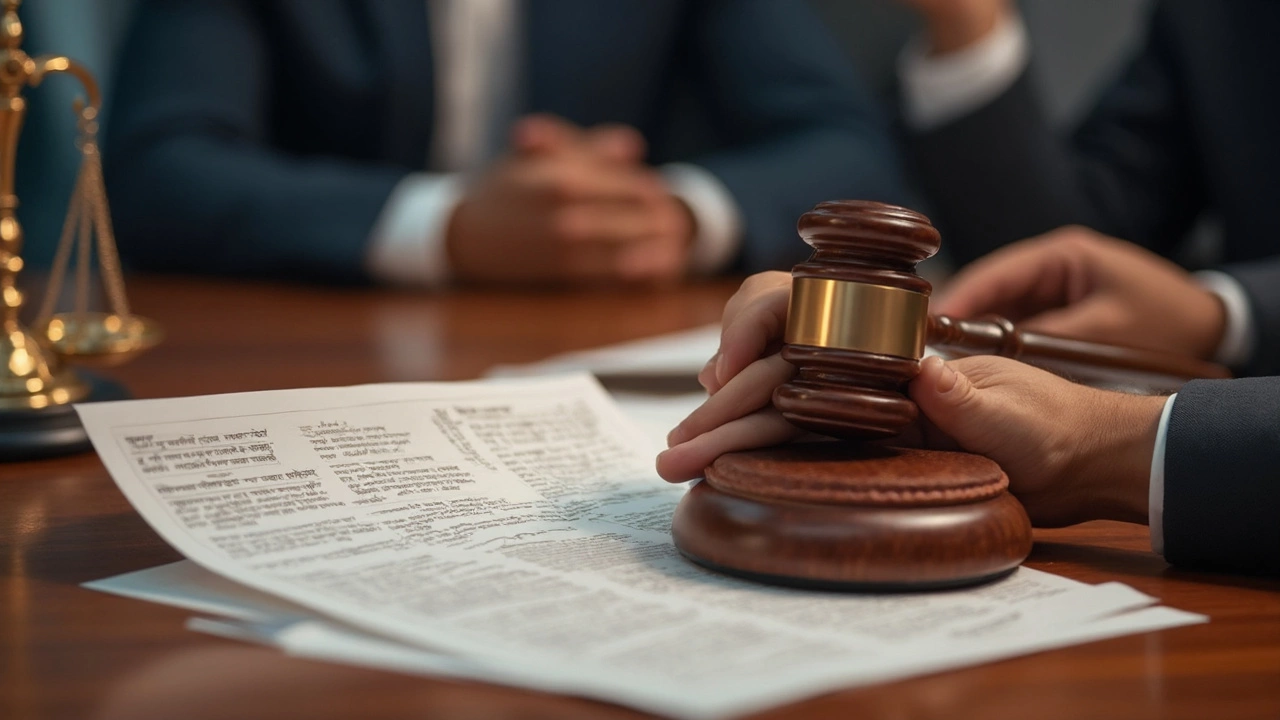Winning a case isn’t about who tells the best story—it’s about who can carry the heaviest weight of proof. People talk about court like it’s just Law & Order drama, but reality is a lot more precise. You don’t just say “I saw him do it!” and expect the judge to hammer down a verdict. There’s a whole system weighing how sure the court needs to be before it tips the scales in someone’s favor. What’s wild is that not every case stacks up the same. The stakes decide the standard. If you ever wondered why O.J. was found not guilty in criminal court but held responsible in a civil suit, you’re about to get a clear answer—because the proof bar is not one-size-fits-all.
Different Levels of Proof: The Court’s Secret Scoring System
When lawyers talk about "the highest level of proof," they’re referring to the yardsticks courts use to judge evidence. Think about it: if you’re facing prison time versus just owing someone money, the system wants to be a lot more sure about sending you away. The three most common standards of proof, ranked low to high, are: “preponderance of the evidence,” “clear and convincing evidence,” and “beyond a reasonable doubt.” Each is more demanding than the last. But the one at the very top—especially in criminal cases—is "beyond a reasonable doubt." If you want to see numbers, experts sometimes explain “preponderance” as tipping the scale even just 51%, and “clear and convincing” at about 75%. But “beyond a reasonable doubt”? It’s not about percentages. It means being so sure a sane, logical person would be left with no realistic doubt after hearing all the evidence.
The difference gets even clearer when you look at famous cases. Remember how the glove didn’t fit O.J. Simpson? His defense did just enough to plant doubt in jurors’ minds, so the criminal case tanked. But months later, in civil court, the burden was lighter: “preponderance of evidence.” There, the jury only needed to think it was more likely than not he was responsible. That’s why one verdict went his way, and the other didn’t. Here’s something wild—New Zealand courts, just like the big-name trials in the US, use these same proof standards. Think I’m kidding? Google the David Bain case from Dunedin. The prosecution slogged through the monumental burden of “beyond reasonable doubt;” in the end, the jury found a gap too large to bridge—even after years of twists.
Take a look at this table that lays out the differences:
| Standard | Level of Assurance | Case Type |
|---|---|---|
| Preponderance of Evidence | More likely than not (over 50%) | Civil |
| Clear and Convincing Evidence | Highly probable (about 75%) | Civil (some cases), Family |
| Beyond a Reasonable Doubt | No reasonable doubt remains | Criminal |
So when people ask, “What’s the highest level of proof required?” now you know the name everyone’s looking for: beyond a reasonable doubt. That’s the system’s way of cranking up certainty—holding back the government from steamrolling you without truly nailing their case.

Why “Beyond a Reasonable Doubt” is So Tough—And What It Really Means
There’s a reason this standard sits at the summit—it was built that way on purpose. Imagine you’re that one juror clenching a ballot in your hand, sweating in the break room. Would you rather risk an innocent person going to jail or a guilty person walking free? Western law traditions, including here in Wellington, weigh the risk of convicting someone innocent way heavier. The famous old line, “It’s better that ten guilty persons escape than that one innocent suffer,” still shapes the game today.
But what does "beyond a reasonable doubt" actually look like in real life? Judges often give juries a talk to help them get it. Here’s one common spiel: “If after careful consideration of all the evidence, you are sure of the defendant’s guilt, you must find them guilty. But if there’s real uncertainty—if you have a reasonable doubt—you must acquit.” The law doesn’t chase absolute, pie-in-the-sky certainty because nobody could meet that. Maybe you can’t say for sure what you ate for lunch last Thursday, much less what happened in some alley three years ago. That’s why the test is reasonableness. Not any doubt, but a doubt based on solid reason.
Jurors bring their own life experience to the party, but they’re not supposed to cook up wild what-ifs. If a question sounds like something out of a sci-fi flick (“Maybe an identical twin did it and nobody knows!”), that’s not reasonable doubt. But if it’s “The eyewitness saw the crime in the dark and admits he’s short-sighted,” that’s a sensible gap. The highest proof standard, “beyond a reasonable doubt,” keeps the system honest. It’s like a firewall: better some bad guys get away than one good person loses their freedom by mistake.
And this isn’t just courtroom drama; it changes lives. In 2019, nearly half of New Zealanders surveyed said they’d want “beyond doubt” if they were ever on trial, but only 13% could explain the difference between proof levels. Most people think "he must have done it—lock him up!" but the law requires more. Here’s a tip: if you ever end up on a jury, ask yourself whether you’d be comfortable going to sleep that night, knowing you voted “guilty.” If something nags at you, that might just be reasonable doubt knocking.
Even lawyers sweat under the shadow of this standard. Prosecutors won’t go to trial half-cocked. They’ll weigh every witness, every photo, every scrap of evidence. If a key witness crumbles in cross-exam, the whole thing might collapse. That’s why you sometimes see guilty people walk free—not because they “got away with it,” but because the system is designed to keep the innocent safe. On the other side, defense lawyers only need to make one thing wobble in the prosecution’s case. Like poking a hole in a boat, sometimes a single point of doubt is enough to sink a verdict.

The Role of Judges, Juries, and Tips to Navigate Proof in Court
The process isn’t just about throwing evidence against the wall and hoping it sticks. Judges have this job of keeping everyone on track. They decide what evidence the jury can see and what’s tossed for being unreliable. Ever wonder why lawyers argue so hard over what makes it in? One bad photo, a sketchy statement, or even some old text messages can swing the whole direction of a trial.
Juries, meanwhile, are the system’s reality check. In New Zealand, most jury trials are criminal cases, and there are usually 12 jurors. They’re everyday people—a teacher, a retiree, a student, a tradie—locked in a room to make a call that could change a life forever. That’s a lot of weight, so jurors get instructions about proof. If you hear about jury deadlocks or mistrials, it’s usually because people just couldn’t cross that “beyond a reasonable doubt” finish line.
If you ever find yourself in court, here’s a survival kit for dealing with proof standards:
- Get everything in writing—testimony fades, but texts, emails, and records stick around.
- Be honest from the start—changing your story makes the other side’s job too easy.
- Understand the difference between levels of proof, especially if your case is criminal or civil.
- Ask your lawyer about any evidence that might undermine the other side’s case. Sometimes doubt is your lifeline.
- Stay calm. The burden isn’t on you to prove your innocence in criminal court. The prosecution must convince the jury, not the other way around.
Looking at the big picture, the “highest level of proof required to win a case” protects people from being railroaded by the system. Sure, it might let a few guilty slip through cracks, but it keeps wrongful convictions lower than in countries with weaker standards. In fact, New Zealand’s rate of overturning wrongful convictions is one of the lowest globally, precisely because of these high proof bars. These rules don’t just exist to tie lawyers in knots—they’re the safety net for everyone, even if you never see the inside of a courtroom.
Next time someone grumbles about a guilty party skating free, remember the hidden gears turning behind the scenes. Those standards of proof hold real power—and if you ever need the courts to work in your favor, you’ll be glad the bar’s set sky-high.
